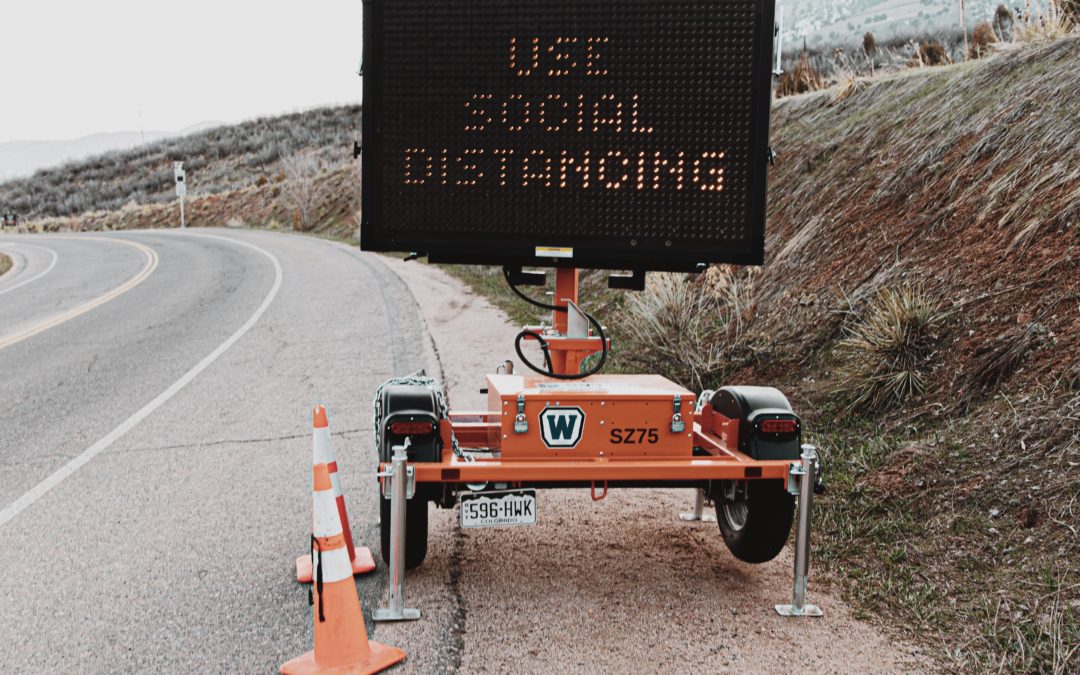COVID19 – It’s Time to Build Trust in Your Brand Through Communication
Clear Communication to Customers
This time we are in is unprecedented. No one knows what the new social norms are. The small things we’ve practiced our entire lives are now out the door. How do you even make a payment in a social distancing world? A six foot barrier around one another is impossible to practice in a line for the cashier/front desk, right? For those of us who are older, who have risk factors, who know someone who was severely impacted or even have lost their lives, the stakes are high in these simple transactions. It is our job as business owners to facilitate transactions from people to us. Let’s talk about what that looks like.
Checklist of items to communicate:
Employee health and welfare
What exactly are you doing to make sure the people the customer interacts with and interacts with the surfaces, food, linens, clothing, etc are healthy? Customers want to hear, are you taking temperatures for everyone coming into work? What is your sick leave policy? What steps will be taken if someone is found to be sick? Who is wearing masks and who isn’t? Darden Group, parent company of Olive Garden, sped up its sick leave implementation across its restaurants ensuring that if an employee is sick, they can afford to take the day off.
Cleaning protocols
What steps are being taken to make sure the business is clean? Will there be a nightly cleaning? Hilton has done an incredible job of communicating how they will change in order to meet the new demands of customers in a marketing push called Hilton CleanStay. Some of the changes they have made include a visible seal to the room to indicate no one has entered since the cleaning took place and a detailed account of exactly the surfaces that are disinfected before your arrival.
What am I supposed to do?
Most Americans haven’t stayed at a hotel in a post COVID-19 world or eaten at a sit down restaurant and many of them probably haven’t even ordered delivery or takeout. Don’t treat them like they have, make sure they are informed about what the experience will be like BEFORE they walk in the door or place an order for delivery. Let them know, are they supposed to wear a mask? Are there options to finalize a transaction before walking in the door? What does delivery look like? How am I supposed to tip? An early leader in communicating expectations was Dominos who perfected the American COVID19 delivery first, or that’s at least what it seemed like in their instructional contactless delivery communication and early advertisements. Before ordering, customers understand what is expected of them and what is expected of the driver. Ensure the guesswork has been removed from your customer.
Interior signage/wayfinding
Am I allowed to walk in or is this a curbside only venue? Are masks required? Has ordering changed, where am I supposed to stand to make an order? Again, these are interactions that don’t have a social norm anymore. There isn’t a blanket approach to this, most Americans have had to venture out to the grocery store but may have opted for self checkout, this could be their first direct interaction with a stranger. Every store has taken a different approach. Let customers know how it is going to work either through visual or verbal communication. I want those I interact with to feel comfortable as much as I am seeking to be comfortable. Let me know what the expectations of the customer are.
Operational communication
What are you communicating by how service is being executed will matter most. In a recent secret shopper exercise, Mark Cuban went through a list of mandatory and suggested protocols at the Dallas re-opening weekend and found abysmal results. It is imperative that above all, you walk to the talk. There are people out there that don’t care and feel invincible, but the vast majority of Americans are scared. This means managing entrances, creating disposable menus, staff avoiding physical interaction or quickly washing their hands following a guest interaction. There should be a visible effort to manage high touch areas, enforcement of social distancing, efforts made for contactless payment and of course, effortless communication.
Summary
It is time to communicate to your customers about expectations, how they are being protected and how they are supposed to interact with your employees. If you do this, then customers will feel confident returning again to your business and you can start to rebuild your business in this new environment.

